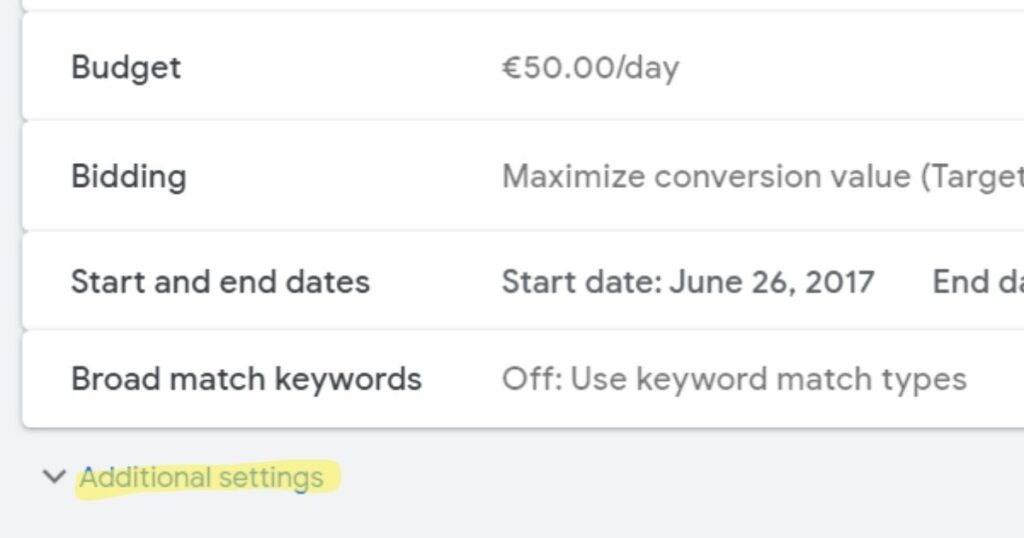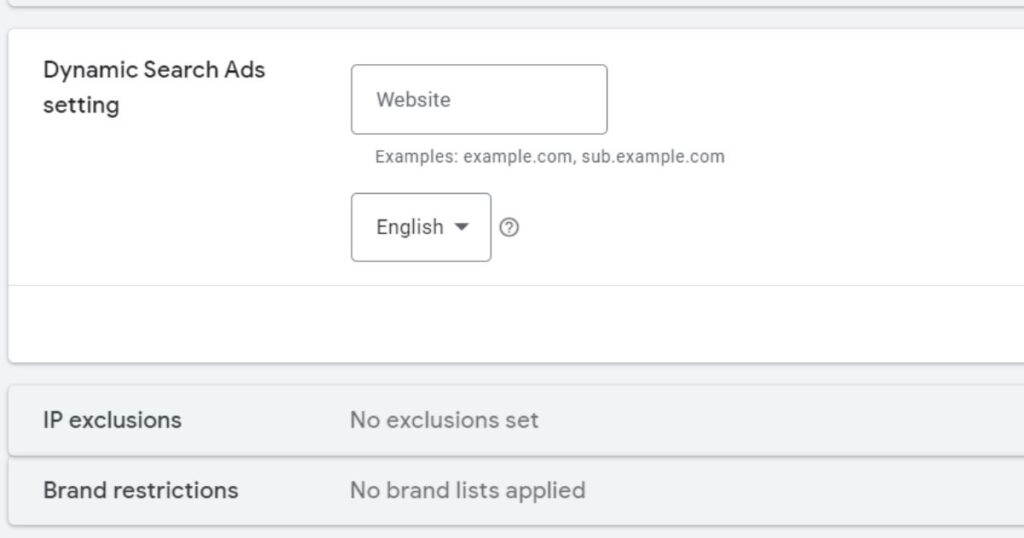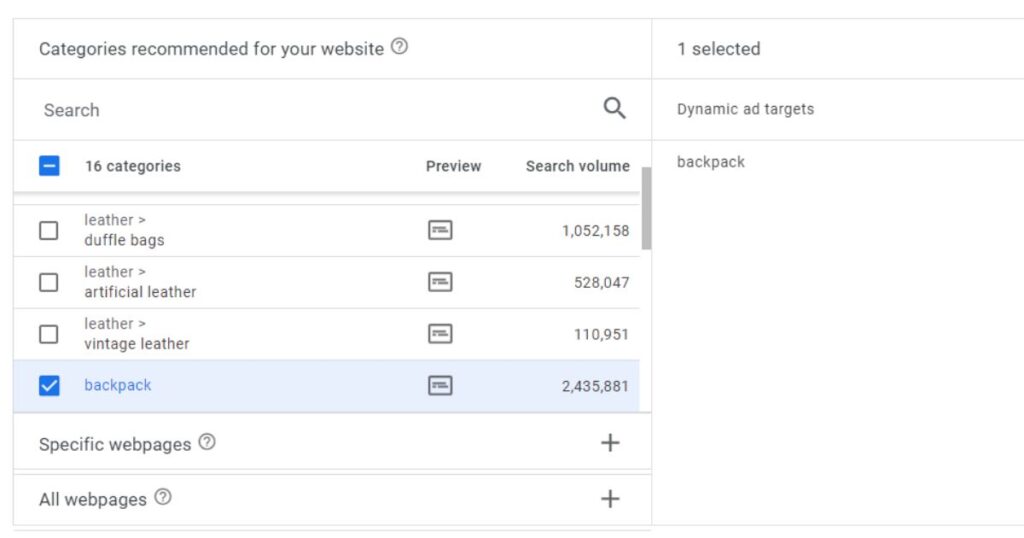Introduction
Google Dynamic Search Ads (DSA) are a highly effective way to boost your online sales.
Dynamic Search Ads are perfect for Ecommerce advertisers with a well-developed website or a large product inventory. They use your website content to target your ads and can help fill in the gaps in your keyword-based search campaigns. Headlines and landing pages for Dynamic Search Ads are also generated using content from your website, which keeps your ads relevant and saves you time.
In other words, Dynamic Search Ads are a type of Google Ads that automatically creates and displays ads based on the content of your website. This can be a great way to reach more potential customers who are searching for products or services that you offer.
In this article, I’ll take a closer look at what Dynamic Search Ads are, how to create them, and best practices for optimizing your campaigns.
- Introduction
- What Are Dynamic Search Ads (DSA)?
- How Dynamic Search Ads Differ from Traditional Search Ads
- How Do Dynamic Search Ads Work?
- Benefits of Using DSA in Google Ads
- Setting Up a Dynamic Search Campaign
- Best Practices for Optimizing Dynamic Search Ads
- How Can I Optimize My DSA Campaign?
- Conclusion
- Further Reading:
What Are Dynamic Search Ads (DSA)?
Dynamic Search Ads are a type of ads that automatically generate ads based on the content of your website.
Instead of bidding on keywords, DSA uses your website’s content to match user queries and display relevant ads. This approach allows for more flexibility and helps to reach more potential customers.
As DSA show super relevant, personalized ads, one could think of them as sort of a search format for Google Shopping ads.
Google Shopping ads are still the number one ad type for Ecommerce businesses.

How Dynamic Search Ads Differ from Traditional Search Ads
Unlike traditional search ads that rely on manually selecting keywords, Google Dynamic Search Ads use the content of your website to automatically generate ads. This eliminates the need for constant keyword updates and allows for a more dynamic and adaptable advertising approach.
This makes Google DSAs an ideal choice for online stores with constantly changing inventory or a large number of products or services to advertise.
How Do Dynamic Search Ads Work?
In a standard Google search campaign for running shoes, advertisers create multiple ad groups to organize their keywords. For each product attribute (e.g. running shoes for men, for women, for kids) advertisers bid on specific keywords and set up responsive search ads with specific headlines, descriptions, and landing pages.
In a dynamic search campaign, however, advertisers target a landing page or a category on their website and only need to create 2 descriptions for their dynamic ads. The Google Ads algorithm will then trigger the ads for each relevant query, automatically generating relevant headlines and selecting the best-matching landing page.
This automation helps to create super-targeted, relevant ads, that in turn enjoy high conversion rates.
Example: You own a website for sports clothing. Running shoes are your biggest category, so you’d like to set up DSA ads for it. You create a new DSA campaign and a new ad group. In the dynamic targeting options, you select the category running shoes. Then all you need to do is add 2 description lines and a call to action.
If you’d like to break it down even further, you can create 2 ad groups – one targeting men’s running shoes, and one targeting women’s.
Now your ads will use the content on all pages that are relevant for these categories, including collection and product pages. Each user will be shown a personalized ad and taken to a different landing page according to their search query.
Responsive Display Ads are another example of how automation is being used on Google Ads.
Benefits of Using DSA in Google Ads
DSA uses automation to save time and improve ad relevance. Here are its main benefits:
- Improved ad relevancy and user experience: DSA matches user queries with relevant ads based on the content of your website. This ensures that users see ads that are directly related to their search intent, leading to a better user experience and increased conversion rates.
- Efficient and automated keyword targeting: With DSA, you don’t need to spend time researching and selecting keywords. The ads are automatically generated based on your website’s content, saving you time and effort in keyword management.
- Expanding your keyword coverage: DSA allows you to reach a wider audience by automatically generating ads for queries that may not have been targeted with traditional keyword-based campaigns. This expands your keyword coverage and increases your chances of reaching potential customers.
- Time-saving benefits for advertisers: DSA eliminates the need for constant keyword updates and manual ad creation. This saves advertisers time and allows them to focus on other important aspects of their marketing strategy.
Setting Up a Dynamic Search Campaign
To set up a successful Dynamic Search Ads campaign, follow these steps:
- Create a new Search campaign: Start by creating a new campaign. In the campaign settings, under ‘additional settings’ go to Dynamic Search Ads setting’ and fill in your website’s URL and the language for the dynamic ads.
- Create a new ad group: When you create it, make sure to change the ad group type from ‘standard’ to ‘dynamic‘. The ad group type can’t be changed later.
- Select the right targeting options: You can target specific web pages, specific categories, or your entire website. It is recommended to set up separate ad groups for each product type or category.
- Create your descriptions: Create 2 descriptions for each ad group. Remember that the landing page and titles of the ad will be dynamic. This means your descriptions have to be broader, not too specific.
- Setting bids and budgets: Determine your bidding strategy and set appropriate budgets to ensure your ads are seen by the right audience.




Best Practices for Optimizing Dynamic Search Ads
To optimize your Dynamic Search Ads, consider the following best practices:
- Monitoring and refining your dynamic ad targets: Regularly review and refine your dynamic ad targets based on their performance. Remove irrelevant targets and add new ones to improve ad relevancy.
- Analyzing search term reports for DSA campaigns: Monitor the search terms that trigger your ads and identify any patterns or opportunities for optimization. Use this data to refine your targeting and improve campaign performance.
- Utilizing negative dynamic ad targets: Use negative dynamic ad targets to exclude irrelevant keywords or queries that don’t align with your advertising goals. This helps improve ad relevancy and reduces wasted ad spend. For Ecommerce you should exclude blog articles and other informational pages, e.g. shipping or about us.
- Exclude brand keywords: You should add your brand keywords as negative keywords to all non-brand campaigns. This way you make sure to reach out to new potential customers.
- Bidding strategies for DSA campaigns: Experiment with different bidding strategies to find the one that works best for your campaign. Consider using automated bidding options to optimize your ad performance.
- Leveraging ad extensions for improved performance: Take advantage of ad extensions to provide additional information and increase the visibility of your ads. This can lead to higher click-through rates and improved campaign performance.
How Can I Optimize My DSA Campaign?
To optimize your DSA campaign, you should regularly monitor your performance and make adjustments to your bids and targeting as needed.
It’s also important to include negative keywords to exclude irrelevant searches, and to add negative dynamic targets. This will ensure that you only send traffic to relevant landing pages.
By following best practices and continually adapting your strategy, you can maximize the effectiveness of your DSA campaign and increase online sales.
Conclusion
Google Dynamic Search Ads offer a powerful and efficient way to boost your online sales. By automatically generating ads based on your website’s content, DSA ensures improved ad relevancy, efficient keyword targeting, and expanded keyword coverage.
By following best practices for setting up and optimizing DSA campaigns, advertisers can maximize their advertising efforts and drive business growth.
Further Reading:
- How to Create a Google Ads Search Campaign for Ecommerce: A Step-by-step Guide
- 13 Ways To Optimize Google Shopping Ads (In A Profitable Way)
- PPC vs. SEO: Which One Is Better? Pros, Cons, And When To Use Which
- Google Ads Bidding Strategies: The Ultimate Guide (And Which One To Use)
- Automation Magic: Enhance Results with Responsive Display Ads

